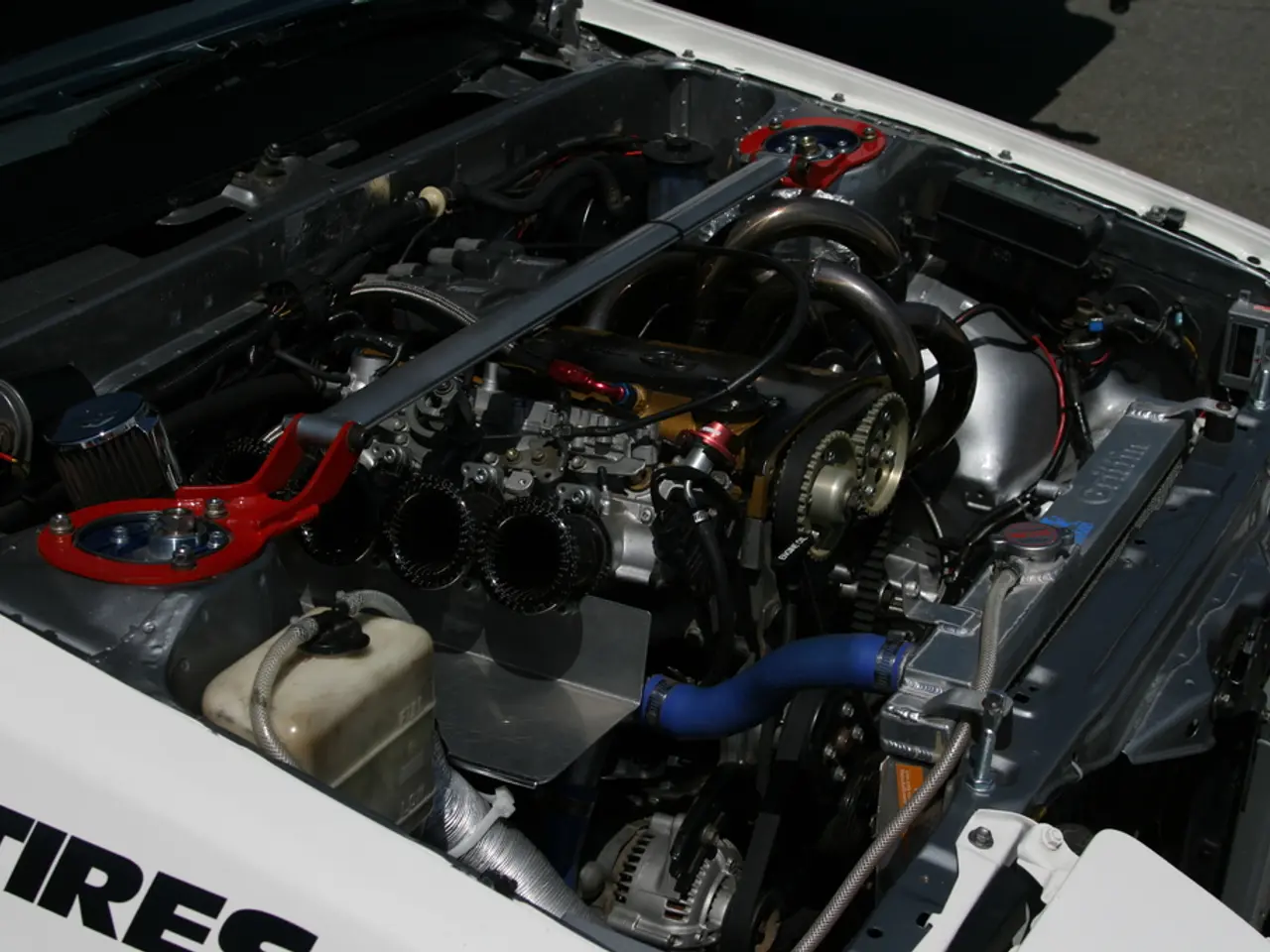First instalment of a grid-scale sodium-ion battery storage system in the U.S. by Peak Energy
Peak Energy, a groundbreaking energy storage company, has made a significant stride in the renewable energy sector with the launch of its first-of-its-kind sodium-ion battery energy storage system (ESS) in the United States. This system, which is already operational on the US electric grid, marks a significant milestone in the commercialization of sodium-ion battery storage in the country.
Cost Savings and Improved Reliability
Peak Energy's ESS offers key advantages over current market-leading lithium-ion systems, primarily in cost, reliability, and raw material sourcing. The system delivers about 20% lifetime cost savings compared to lithium iron phosphate (LFP) batteries, along with over $1 million in annual operational cost savings per gigawatt-hour installed.
These savings are driven by up to a 90% reduction in auxiliary power use, such as fans and chillers. The raw materials for sodium-ion batteries, notably soda ash, are much cheaper and more abundant than lithium, leading to lower upfront capital costs for these systems.
Enhanced Reliability and Safety
The system's passive cooling architecture eliminates moving parts, fans, pumps, and fluid thermal systems, removing more than 85% of typical battery energy storage system (BESS) failure modes. This leads to no planned maintenance, no scheduled servicing, and negligible auxiliary electrical loads, enhancing uptime and minimizing operational complexity.
Peak Energy's sodium-ion chemistry is fundamentally safer for stationary storage, has a wider operating temperature range, and avoids thermal runaway risks more common in lithium-ion systems. The UL9540A-tested cells require no active cooling, further lowering the risk of fires or hazards.
Domestic Raw Material Sourcing and Supply Chain Security
Sodium used by Peak Energy is sourced from soda ash, of which the US holds 92% of global reserves, effectively making the country a dominant supplier. This contrasts sharply with lithium, cobalt, and nickel, which have fragile, often geopolitically sensitive supply chains dominated by other countries (notably China). This domestic access to abundant sodium compounds enables localized supply chains, reducing geopolitical risk and price volatility.
Commercial Readiness and Scalability
Peak Energy has achieved the first grid-scale deployment of sodium-ion ESS in the US and is already negotiating nearly 1GWh of future contracts. Their first U.S. cell factory will begin production in 2026, targeting gigawatt-hour scale manufacturing using conventional electrode processes supporting rapid scale-up.
The news comes just one year after Peak Energy raised its $55M Series A, signalling the company's commitment to developing grid-scale battery supply chains. Peak Energy launched from stealth in 2023, and with this breakthrough, the company is poised to serve multiple IPP and hyperscaler partners with its commercial-scale storage products.
Further announcements about Peak Energy's deployment of commercial-scale storage products are anticipated this fall. Following the pilot, Peak Energy will deploy several hundred megawatt hours of commercial-scale storage products over the next two years.
In summary, Peak Energy's sodium-ion ESS innovates by reducing costs significantly, enhancing system reliability and safety, and leveraging abundant domestic raw materials that avoid supply chain vulnerabilities inherent to lithium-based systems. These innovations position sodium-ion technology as a highly competitive and strategic alternative to incumbent lithium-ion ESS in utility-scale grid storage applications today.
Technology plays a critical role in Peak Energy's sodium-ion ESS, offering key advantages over lithium-ion systems in terms of cost, reliability, and raw material sourcing. The technology delivers approximately 20% lifetime cost savings compared to lithium iron phosphate (LFP) batteries, along with over $1 million in annual operational cost savings per gigawatt-hour installed.
Peak Energy's sodium-ion chemistry and passive cooling architecture contribute to the enhanced reliability and safety of the system. The technology's reliance on abundant domestic raw materials from the US, such as soda ash, also ensures a more secure supply chain compared to lithium-based systems.




